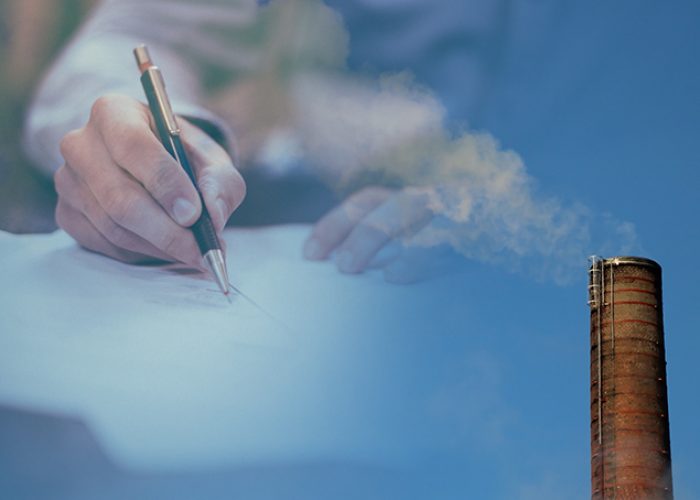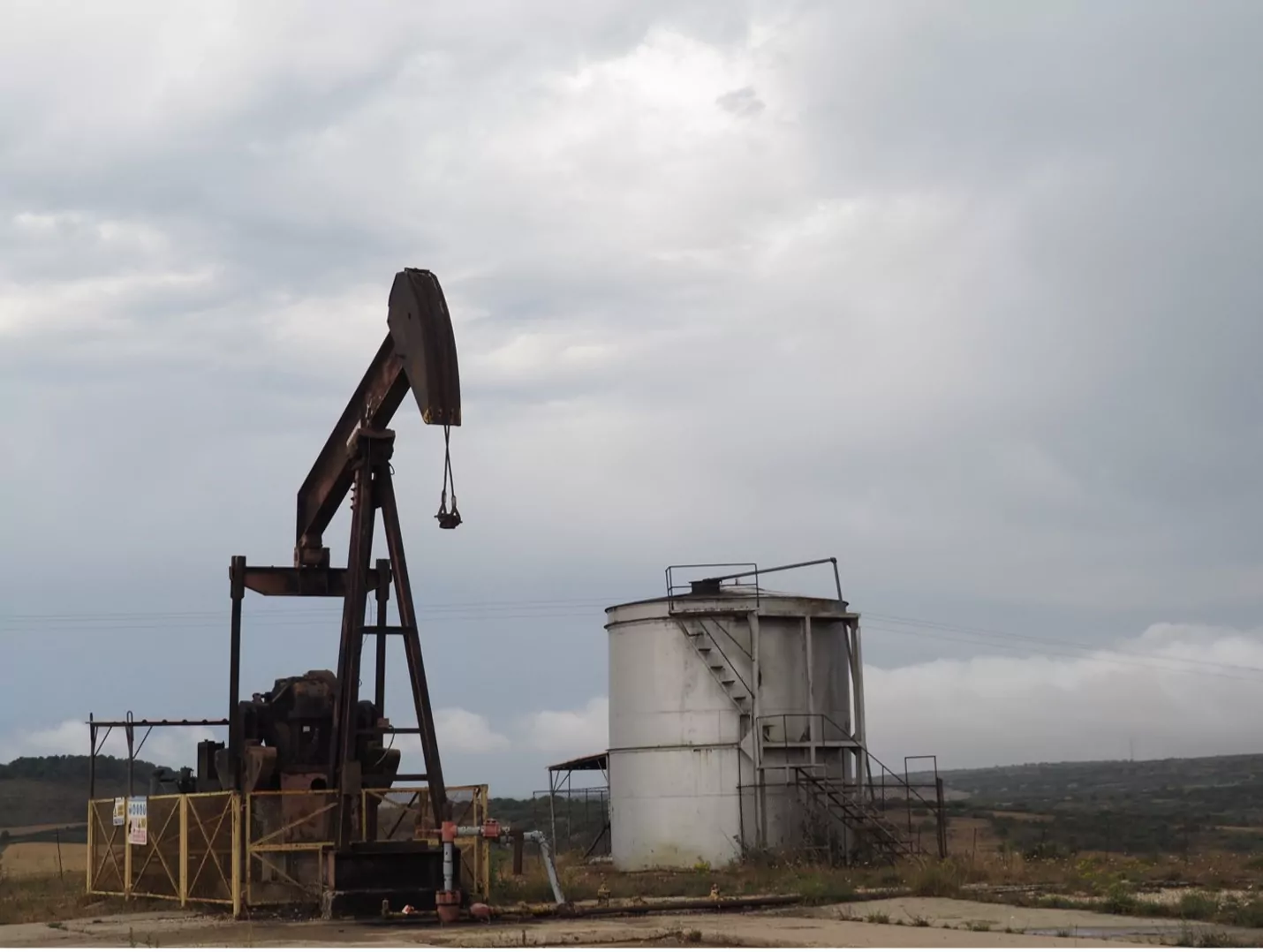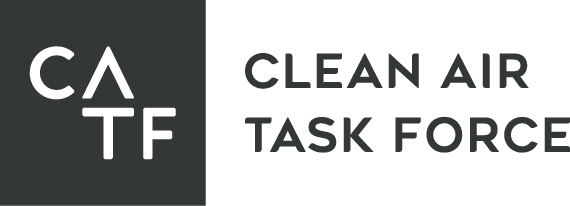We advocate for smart policies that can reduce methane emissions in Europe and around the world.
These fall into five core areas. Click below to read the section about each policy proposal:
- Comprehensive Leak Detection and Repair (LDAR) Program
- Ban on Routine Venting and Flaring
- Regulation on Measurement, Reporting and Verification
- Tough Import Standards from Production Regions Outside the EU
- Dealing with Abandoned and Unused Oil and Gas Wells
Comprehensive Leak Detection and Repair (LDAR) Program
What is the problem?
Methane leaks refer to the escape of gas from static components (connectors, valves, regulators, and hatches) and are widespread in the oil and gas industry. They are due to many causes like thermal or mechanical stresses, human error, or worn-out equipment. Leaks can be small, or they can be large, depending on the component that is malfunctioning. Leaks turn into a big problem over time if they are not detected and repaired in a timely manner.
Leaks like these from a malfunctioning valve and a rusted hole at an oil and gas gathering facility in Hungary are easily detectable with a comprehensive LDAR program.
How can the EU tackle the problem?
Leaks are unpredictable. The only way to address them is with efficient and robust Leak Detection and Repair (LDAR) requirements. Besides the clear climate benefits of reducing methane emissions, LDAR programs can also be extremely cost-effective, as in most cases the value of saved gas exceeds the cost of repairing the leak.
As no data or new technology are needed to apply LDAR requirements, the EU could implement it in less than two years. The EU LDAR legislation should cover both fugitive emissions and excessive venting from equipment that is designed to vent gas (such as pneumatic controllers, compressor station packing rods, and storage tanks). Detection is based on the same methods and tools CATF uses to record methane emissions.
An efficient EU LDAR legislation would make monthly or quarterly instrument-based leak detection mandatory, or push for continuous monitoring with advanced technologies. Based on US Environmental Protection Agency data, emissions from leaks can be cut by about 90% with monthly inspections or 80% with quarterly inspections.¹
Once leaks are detected, legislation should make it mandatory to repair it within a strict timeline: within 5 days for most leaks or, for very specific cases which require a shutdown in order to repair the issue, within one year. The leaks should then be re-surveyed to check if the repair was successful. Without strict deadlines, companies may choose to delay repairs. During the #CutMethaneEU campaign, CATF has met several companies that have been aware of the leaks for more than one year and had no immediate plans to fix them. Strict deadlines will therefore be crucial.
It was also common to see hatches and pressure release valves on storage tanks left open and continuous streaming emissions from separator tanks that separate the water, oil, and gas during processing. These venting practices can be prevented by capturing the gas and sending it along the pipeline or by flaring it. Smart policies introduced by the government can reduce venting. Throughout the trip, we saw few flares being used to burn the gas.
Ban on Routine Venting and Flaring
What is the problem?
Methane flaring and venting are controlled releases of greenhouse gases that are part of routine operations from the gas and oil sector. Natural gas flaring refers to the controlled combustion of natural gas while venting is the direct release of natural gas into the atmosphere.
Venting and flaring have devastating environmental impact as they represent large emissions of methane. They also damage public health and welfare with air pollution and represent an economic loss, as gas is lost while it could have otherwise been available for productive use. In 2020, flaring reached levels that have not been reached since 2009, highlighting the need to address the issue to efficiently mitigate methane emissions.²
Local ordinances in Italy prevent the company from flaring methane at this facility, in the event of an emergency, forcing them to vent leaking gas into the atmosphere.
How can the EU tackle the problem?
Routine venting and flaring should be banned, with clearly defined exceptions for safety reasons, emergency, or circumstances where capture for sale and reinjection would not be technically possible or would be extraordinarily costly. Anything not specifically allowed under an exemption would be banned. In all circumstances where the only options are either to vent or flare, operators should be required to flare rather than vent.
This ban should cover wells, large purposeful releases, and venting-by-design equipment. Venting-by-design equipment should be progressively replaced, with clear requirements and timelines for equipment replacement as well as requirements for the installation of zero-emission designs in new facilities, when appropriate.
Norway’s ban on venting and flaring can be used as an example. It requires polluters to pay a tax on flaring, to adopt a plan to capture excess and associated gas, to obtain permits to flare, and to report all flared gas on a monthly basis and in public reports.
Regulations on Measurement, Reporting, and Verification (MRV)
What is the issue?
National methane emissions inventories are, as a general rule, not very accurate. Research has found that global anthropogenic fossil methane emissions are up to 40% higher than reported.³ Our campaign has showcased how often international best practices for preventing methane emissions are not followed, casting further doubts on the reported emissions estimates. A robust and scientifically rigorous Measurement, Reporting, and Verification (MRV) system is necessary to identify issues as well as to assess the progress achieved by other methane curbing legislation. However, while MRV is important, it is not a prerequisite to the adoption of emissions mitigation requirements.
How can the EU tackle the problem?
CATF strongly welcomes the commitment of the European Commission to adopt a legislative proposal on compulsory MRV for all energy-related methane emissions, based on the Oil and Gas Methane Partnership (OGMP)⁴.
On measurement
Based on the current situation of the oil and gas industries and on existing frameworks utilised in other jurisdictions regulating methane emissions, (e.g. Canadian federal and provincial regulations, US state and federal regulations, Norwegian regulations, and Mexican regulations), CATF suggests a gradual two-steps approach:
- First, implement emissions monitoring that relies on a comprehensive equipment survey, granular, detailed reports, and application of the most up-to-date emission factors on the whole EU oil and gas supply chain. As this could be achieved at limited costs and with the scientific tools and methods already available, it should be enforced as soon as possible and no later than 6 months after the adoption of the MRV legislation.
- Second, make measurement data in emissions monitoring compulsory. With the rapid development of methodologies and technologies, emissions measurement at facility level, using satellite, aerial, and ground-based technologies, should be implemented within two years.
On reporting
Methane emissions measurement will only be useful to reach EU climate targets if it is being accurately reported and if the information is made available. Reporting should include detailed emissions information and not just overall aggregate emissions at the country or asset level. Granular data is critical to assess accurately emissions and mitigation and to ensure third-party verification. To ensure transparency and feed both the scientific and the public debate, the data should be made available to the public in a harmonised easy to understand format.
On verification
Third-party verification will be needed on emissions from fossil gas imported to the EU. Independent verifiers should ensure the reported emissions match the emissions measured, that the reporting method respect the requirement, and that the measurement data are based on an accurate methodology. When satellite data becomes available both regulators and third parties will need to incorporate that data into their assessments of emissions and compliance.
Tough Import Standards from Production Regions Outside the EU
What is the problem?
The EU imports over 80% of the gas and 90% of the oil it consumes. Consequently, most of the methane emissions created as a result of EU oil & gas consumption happens outside of EU borders. EU demand for oil and gas is one of the main drivers of global methane emissions. Any LDAR requirements and a ban on venting and flaring that would apply only inside the EU would therefore fail to address the global methane emissions that the EU is responsible for.
An unlit flare venting methane into the atmosphere in the United States. Gas from the United States is compressed into a liquid form and imported to Europe. (Video Captured by Earthworks.)
How can the EU tackle the problem?
The upcoming LDAR standards and the ban on venting and flaring should apply to imports and cover the full value chain up to the point of production.
Requirements on imports could significantly contribute to emission reductions and could help spread methane mitigation around the globe, increasing the impact of the European action and reflecting the EU commitment to promote strong environmental policies internationally. As the largest importer of fossil energy in the world, the EU is in a unique position to lead on methane requirements on fossil energy.
Methane requirements on imports could impact producers around the globe and ensure global methane mitigation. We saw in the past that EU-standards could influence actions and legislation around the world. That’s something the EU should aim to do for methane abatement. Moreover, standards on imports are needed to ensure a level-playing field between EU and companies operating in other countries.
Dealing with Abandoned and Unused Oil and Gas Wells
What is the issue?
We do not know the total number of abandoned wells in Europe. The oil and gas industry in Europe dates back to the 1850s. Wells that have been improperly closed have been found to emit a continuous stream of methane. The issue of abandoned and unused wells is complicated by the difficulty in identifying which companies own them or are responsible for them. In some cases, due to the way these wells were decommissioned, no owner can be identified and held accountable for the emissions and the measures needed to address them.
How can the EU tackle the problem?
A separate program on methane mitigation for abandoned wells should be established to ensure finding, sealing, and monitoring of these wells. Such a program could lead to substantial reductions in methane emissions from abandoned wells as well as employment
opportunities. For this programme, the Commission should provide funding for the monitoring and capping of wells without legal ownership.
The recovery and resilience funds would offer an opportunity for Member States to use EU funds for this kind of program. As a potential inspiration, the Canadian federal government is dedicating $1.7 billion (Canadian) to help clean up abandoned and orphaned wells and to provide employment as part of the COVID 19 economic recovery efforts⁵.
¹ EPA (2016) Background Technical Support Document for the Final New Source Performance Standards 40 CFR Part 60, subpart OOOOa, p. 41 (available at https://www.regulations.gov/document?D=EPA-HQ-OAR-2010-0505-7631).
³ Hmiel, et al., (2020) “Preindustrial 14CH4 indicates greater anthropogenic fossil CH4 emissions”, available at https://www.nature.com/articles/s41586-020-1991-8 (finding that “This result indicates that anthropogenic fossil CH4 emissions are underestimated by about 38 to 58 teragrams CH4 per year, or about 25 to 40 per cent of recent estimates.”)
⁵ See Natural Resources Canada’s Emissions Reduction Fund at: https://www.nrcan.gc.ca/science-and-data/funding-partnerships/funding-opportunities/current-funding-opportunities/emissions-reduction-fund/22781





